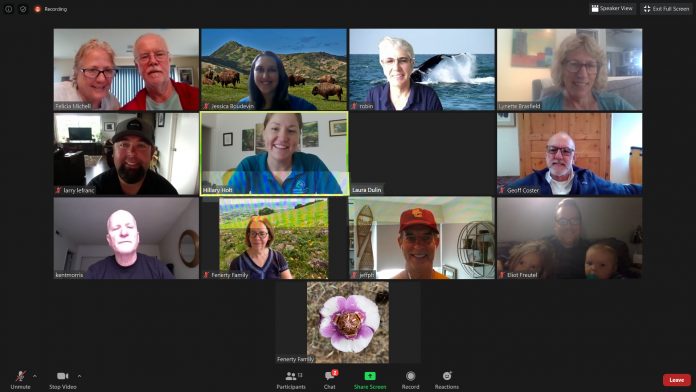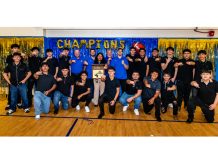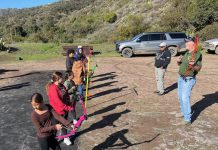
Conservancy has now certified 43 individuals through program
By Jessica Boudevin
For the Islander
On May 29, Catalina Island Conservancy Interpretation and Outreach Specialist Hillary Holt watched this year’s class of California naturalists present their Capstone Projects. This year’s program was different than previous iterations in that it was brought online for the first time. It ended the same way, with the Capstone presentations giving classmates a chance to “meet” via Zoom. With 2020’s CalNat graduates, Catalina Island Conservancy has now certified 43 individuals as California naturalists through University of California Agriculture and Natural Resources California Naturalist program.
The UC ANR California Naturalist program was developed in 2012. Now more than 45 partner organizations (including Catalina Island Conservancy) educate new advocates and nature enthusiasts as California naturalists.
“Different organizations teach through the lens of their respective sites,” said Holt. “For instance, with the Catalina CalNat program, we add sections on island biogeography and the Tongva.”
Bringing the program online was an exciting development for the Conservancy. Previously, the course was offered in person as three-hour evening classes once a week.
“There are so many people who love the island that wouldn’t be able to make the commute for the standard class offering,” said Holt. “We’ve been lucky enough to certify many local, on-island participants. It was great to open up the opportunity to a wider audience.”
As originally planned, the certification would include a six-day immersion field school featuring island-specific guest speakers and activities. Though the field school has been postponed due to the pandemic, participants were still able to complete all of the coursework and graduate as certified California naturalists.
“Being part of a naturalist community and being in contact with nature really helped get people through a difficult time,” she added. “So much about being a naturalist is community, and right now that’s what our planet and people need more than anything.”
Taking the class online came with its own opportunities and challenges.
“I’ve never taken an online class before,” said CalNat participant and Conservancy employee Geoff Coster. “Being able to work at my own pace has been great. The class was divided into modules and, with the book, you can take as much time as you want.”
The students were given specific assignments to complete safely around their own neighborhoods.
“One of the assignments was to look for a vernal pool, which is a type of ecosystem that has existed since geologic times,” said Coster. “The whole program really enforces a sense of who we are and where we come from. I find myself looking at things in a different way when I’m walking around. I’m much more curious now than before.”
Because the program focuses on California overall, as opposed to Catalina specifically, student projects covered a wide range of issues. For their final projects, the graduates focused on topics including creating resources for guided hikes and marine mammal watching, looking into sustainability, promoting volunteer opportunities, educational materials on biodiversity and more.
Robin Froman combined fact sheets from the American Cetacean Society with other information to create a marine mammal watching resource complete with fun facts.
“One of my favorite facts is one my son told me: How many kindergarteners can fit on the tongue of a blue whale? The answer is 400, but the whale can’t swallow them because their throat is only the size of a basketball,” she said. “I think everybody should be able to get out and see these magnificent creatures. When they do, it creates more awareness and more people interested in protecting them.”
Patrick and Felicia Michell both took the 2020 CalNat course, with their Capstone projects focusing on sustainable farming and promoting volunteering at the Conservancy’s Ackerman Native Plant Nursery. Lynette Brasfield tied in her work with the Laguna Canyon Foundation and the value of storytelling, myths and legends in the natural world. She created a guided hike that weaves in stories about the surrounding nature. Laura Schare spoke to the importance of community science and iNaturalist, while Laura Dulin created a promotional PowerPoint for the Living Coast Discovery Center and US Fish & Wildlife Service. Kent Morris spoke to the class about his experience doing Marine Protected Areas training. Jeff Houston designed materials to promote community science through iNaturalist and saving wildlife at Dana Point Harbor and Headlands during the whale festival, and Larry LeFranc created a proposal for an Island biodiversity children’s book. Coster’s project focused on using interpretation tools to share information with people from all backgrounds.
“For me, participating in the training was huge. I can relate a lot of what I learned to experiences on Catalina,” he said. “I can’t wait to go hiking now!”
Congratulations to the new California UC ANR California Naturalists.










